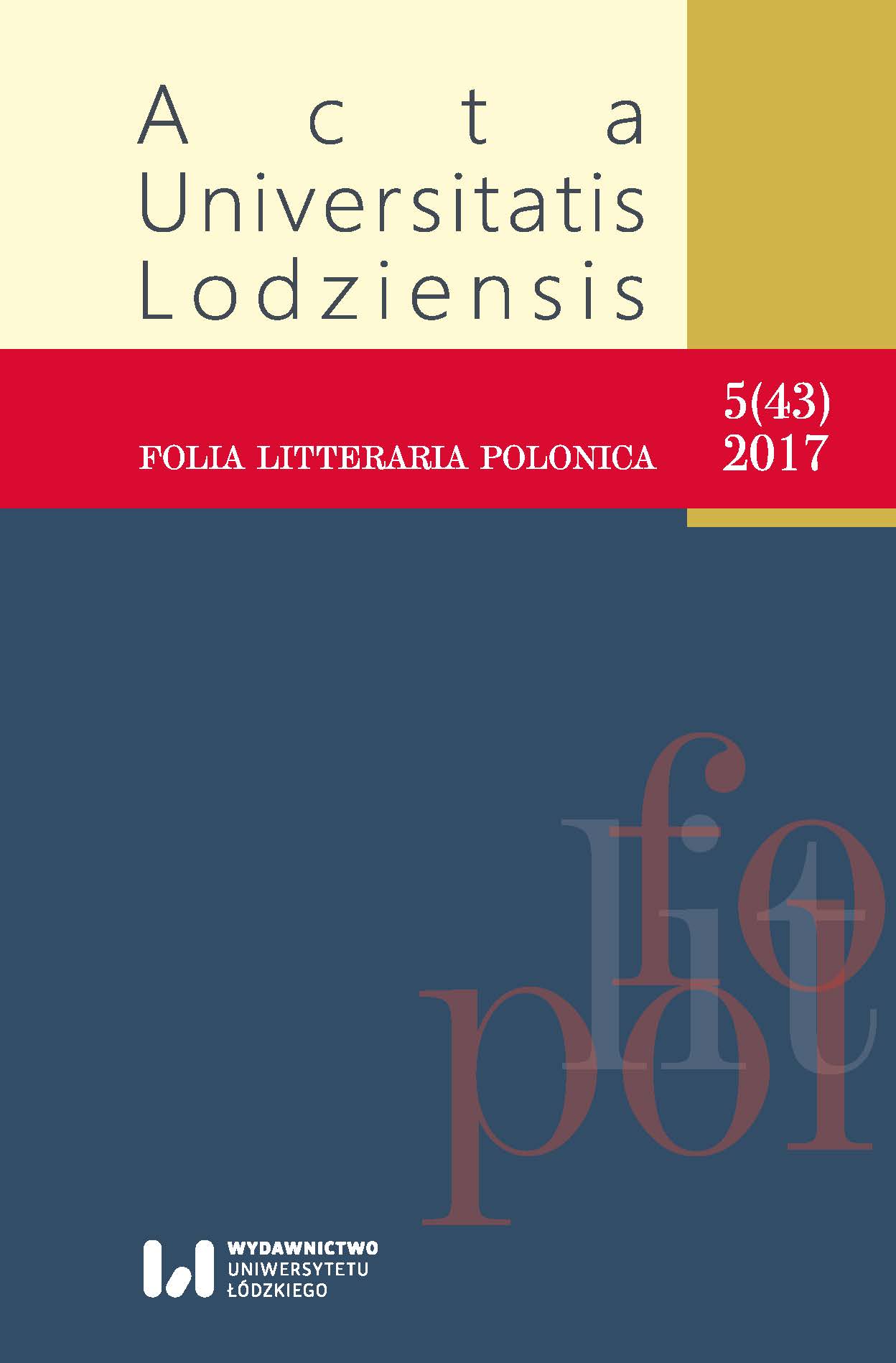The “Salt of the Earth” documentary film by Wim Wenders as an implementation of the „text within a text” rhetorical strategy
DOI:
https://doi.org/10.18778/1505-9057.43.15Słowa kluczowe:
Report on art, rhetoric of a documentary, topos of the face, anthropology, ethos of a directorAbstrakt
Wim Wenders’s report is devoted to the output of the world-renowned photographer Sebastião Salgado. The presentation of his works in the documentary employed the text within a text composition, or rather „photography within a documentary”. The director emphasised the photographs and the statements by the photographer in such a way that the viewers could learn about Salgado as the author of his works and as a human, a humanist concerned about the fate of contemporary human beings. The analysis and the interpretation of the report enabled me to reflect theoretically on the definition and the specificity of photography.
Pobrania
Bibliografia
Borkowska E., “Sebastiao Salgado. Opowieść o fotografie, który udowodnił, że ziemia jest mokra od łez”, http://weekend.gazeta.pl/weekend/1,152121,19070589,sebastiao-salgado-opowiesc-o-fotografie-ktory-udowodnil-ze.html [accessed on: 15.02.2017].
Google Scholar
Czeczot-Gawrak Z., “Filmowa prezentacja sztuki. Architektura, malarstwo, rzeźba, grafika, sztuka ludowa, rzemiosło artystyczne”, Wydawnictwa Szkolne i Pedagogiczne, Warsaw 1979.
Google Scholar
Deleuze G., “1. Kino. Obraz – ruch, 2. Obraz – czas”, Wydawnictwo Słowo/obraz terytoria, Gdansk 2008.
Google Scholar
Głowa J., “Klasyka polskiego filmu o sztuce. Dwie tendencje”, Estetyka i Krytyka 2007/2008, Issue 1/2 (13/14), pp. 47–61.
Google Scholar
Helman A., Ostaszewski J., “Historia myśli filmowej”, Wydawnictwo Słowo/obraz terytoria, Gdansk 2010.
Google Scholar
Joost G., “Die audio-visuelle Rherorik des Films”, Transcript, Bielfeld 2008.
Google Scholar
Kacprzak M., “Sól ziemi. Bliżej Sebasiao Salgado”, https://wszystkoconajwazniejsze.pl/marek-kacprzak-sol-ziemi-blizej-sebastiao-salgado/ [accessed on: 25.02.2017].
Google Scholar
Karacauer S., “Teoria filmu. Wyzwolenie materialnej rzeczywistości”, transl. by W. Wertenstein, 2nd ed., Wydawnictwo Słowo/obraz terytoria, Gdansk 2008.
Google Scholar
Lotman Y., “Tiekst w tiekstie”, Trudy po znakowym sistiemam 1981, Issue 14, pp. 3–18.
Google Scholar
“Metody dokumentalne w filmie”, D. Rode and M. Pieńkowski (eds.), Wydawnictwo Biblioteki Państwowej Wyższej Szkoły Filmowej, Telewizyjnej i Teatralnej, Lodz 2013.
Google Scholar
Pietrzak M., “Retoryka. Narzędzie w twórczej komunikacji. Teatr i film”, Wydawnictwo DiG, Warsaw 2012.
Google Scholar
Przylipiak M., “Poetyka kina dokumentalnego”, Wydawnictwo Uniwersytetu Gdańskiego, Gdansk–Slupsk 2004.
Google Scholar
Świontek S., “Norwidowski teatr świata”, Wydawnictwo Łódzkie, Lodz 1983.
Google Scholar
Walczak B., “Antropolog jako Inny”, Wydawnictwo Naukowe Scholar, Warsaw 2009.
Google Scholar











